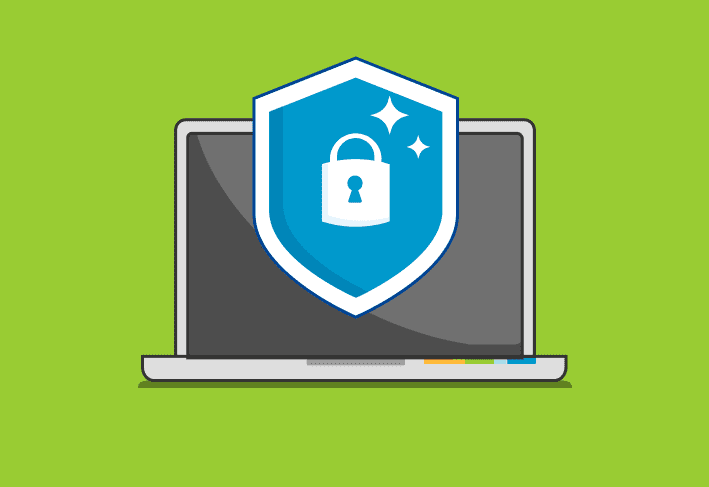Employees are the greatest asset to a business. Unfortunately, employees are also frequently a company’s greatest cybersecurity weakness, and threat actors know it. A simple employee error may result in a security breach that could cost your company millions. With the costs of data breaches increasing, it’s in every business’s best interest to avert cybersecurity incidents whenever possible through effective employee cybersecurity training.
Many employees outside of IT are oblivious to cybersecurity concerns. Even if they understand the basics, they may be under the mistaken impression that your company has a superhero-like immunity to all cybersecurity threats. But unfortunately, an attack could be any business’s Kryptonite. Helping your employees learn more about cybersecurity risks is the best way to turn them into your true cybersecurity superpower.
We'll share some of the main reasons why cybersecurity training is critical.
1. Keep employees up to date on the latest information
The cybersecurity landscape changes quickly. Even if employees received extensive information security training just a year ago, they may be out of touch with what’s happening today. Routine cybersecurity education helps employees maintain current knowledge of the latest cyber threats potentially targeting your sensitive data.
2. Reduce human error
All too often, employee errors give threat actors access to your environment. While comprehensive employee security awareness training won’t prevent every gaffe, snafu, and oopsie, knowledge truly is power.
Employees are much less likely to fall for a malicious actor’s tricks if they know what to look for. Those who receive monthly cybersecurity training are more likely to recognize the security risk of clicking a suspicious link or attachment, using a weak password, reusing a password, leaving a computer unlocked, or using public Wi-Fi.
3. Reduce anxiety
Being unaware is stressful. Without a security awareness program, employees are left to rely on their best (but uninformed) judgment. Reporting potential cyberattacks also creates anxiety. That’s a lot of pressure to put on your employees. The right employee cybersecurity training program can promote confidence and combat cybersecurity-induced anxiety.
4. Free up the IT department’s time
Even minor cybersecurity incidents are time consuming. Whenever an employee reports that they clicked a suspicious link, downloaded a suspicious attachment, or left a device unattended in a public place, your IT team needs to spring into action to investigate. Maybe it’s nothing. But it takes valuable time that your IT team could be using for better things, like performing other cybersecurity tasks, hitting up an IT conference, taking technical courses, or finding the best tools.
5. Save money
Cybersecurity awareness training costs start at around $10 per employee per year. In contrast, breaches cost an average of $4.88 million per data breach. Those numbers should convince even the most miserly executive.
6. Maintain your reputation
The immediate consequences of a data security incident can be debilitating. You may have to cease normal operations while your team scrambles to determine what sensitive information was affected and recover from the incident.
However, the most catastrophic effects may not be apparent right away. Reputation damage can be severe and long lasting. It can cause a drop in stock prices, but it can also cost you valuable business opportunities.
While it's difficult to quantify the potential effects, one report suggests that 60% of consumers in the United States are less likely to buy from a company that experienced a breach, with Millennials and Gen Z customers particularly likely to switch in the wake of an attack.
7. Maintain compliance
Many compliance standards call for cybersecurity awareness training. These include the Health Insurance Portability and Accountability Act (HIPAA), Gramm-Leach-Bliley Act (GLBA), Cybersecurity Maturity Model Certification (CMMC), National Institute of Standards and Technology Cybersecurity Framework (NIST Cybersecurity Framework), SOC 2, and other big names in cybersecurity compliance.
Support compliance
In addition to cybersecurity training requirements, most compliance standards also call for vulnerability management. Traditional methods of remediating vulnerabilities are time consuming. But PDQ Connect makes remediation quick and painless by detecting, prioritizing, and offering one-click resolution. Sign up for a 14-day trial to start knocking out vulnerabilities.
8. Create a culture of cybersecurity
Cybersecurity shouldn’t just be something you talk about when there’s a problem. It should be an integral part of your day-to-day operations. Regular security awareness training helps keep it front and center, incorporating it more seamlessly into your culture.
Cybersecurity training FAQs
How to choose a security awareness training program
There’s no shortage of security awareness training programs. While that means there’s probably one that’s ideal for your company (yay!), it also means that making your choice may be difficult (boo!). We’ll break down the selection process to help you find the best option for your company.
Assess your needs and users
What’s your budget? What are your goals? How many employees do you have? How much do they know about cybersecurity? Understanding your business and users is the first step toward picking an appropriate training solution.
Consider the focus and skill level
Finding a training program with the right focus and skill level can help keep your employees moving forward. The challenge here is that employee skill levels vary. For instance, IT teams typically have more cybersecurity skills than other departments, so they may be able to handle more advanced topics, like ethical hacking, penetration testing, and network security. However, the ideal program should help even your most tech-savvy employees without going over the heads of your least knowledgeable staff members.
If you want to provide more advanced training for IT employees, you could always see about investing in a cybersecurity course or cybersecurity certification, such as Certified Cloud Security Professional (CCSP) or CompTIA Security+.
Ensure measurability of results
If you can’t measure the results of your security awareness training, you don’t know if your investment is paying off. Luckily, many programs include testing. This shows progress (and gives you results to share with upper management), but it also clarifies what your employees still need to work on so that you can chart the best course of action.
Assess the potential for user engagement
All too often, employees just click through cybersecurity training without actively engaging. Training programs with diverse content, including videos and interactive elements, can help hold users’ attention.
Look for phishing simulation
Phishing attacks are some of the most common threats that employees face. Successful attacks may install malware, steal login credentials, or even steal money directly. Studying the technique is useful, but that doesn’t mean employees will recognize the signs in real life. Phishing email security training coupled with phishing simulation puts your users to the test and identifies which employees may be most susceptible to social engineering attacks.
Phishing threats are nothing to sneeze at. According to IBM's Cost of a Data Breach Report 2024, phishing was responsible for 15% of breaches reported by respondents. The average breach due to a successful phishing attack costs $4.88 million.
Check compliance requirements
If your company is subject to compliance requirements, review them before selecting a cybersecurity awareness training program. The guidelines may specify the necessary cyber training content and frequency. If you don't have the resources or expertise in house, you might also consider hiring a third-party cybersecurity analyst to assess your needs.
How do you foster a culture of cybersecurity?
More and more companies try to cultivate a culture of cybersecurity rather than simply training employees. This approach aims to engrain values, attitudes, and norms to make cybersecurity an integral part of the company rather than forcing it to the sidelines. A culture of cybersecurity empowers employees to change behaviors, report concerns, and protect the organization. But a culture of cybersecurity doesn’t just develop on its own. Your company should take active steps to foster it.
These steps help protect your environment, but they also signal to employees that cybersecurity is a priority.
Ensure leaders prioritize cybersecurity
Before your company can embrace cybersecurity, your leaders must understand security threats and how they impact business. Once you have C-suite buy-in, it’s easier to incorporate cybersecurity fundamentals into your overarching business strategy.
No budget? No worries.
Getting the buy-in for cybersecurity training is one thing. Getting the budget is another. If you're trying to launch a cybersecurity training program without funds, consider the Federal Virtual Training Environment. This resource is free for government employees, and over a dozen courses are also free to the general public. That said, courses tend to be an hour or more in length and relatively technical.
Establish clear policies
Having clear password policies and IT policies in place lays the foundation for cybersecurity by enacting guidelines and reducing uncertainty. Users should understand your security policies pertaining to strong passwords, acceptable use (including social media), data privacy, cloud security, physical security, how to report potential threats, and more.
Enforce your policies
While putting policies on the books is an important step, you need to enforce them to make them truly impactful. Enact methods to confirm employees follow your policies and find ways to remedy the situation if they’re not.
Make it easy and positive
Following policies and processes shouldn’t be difficult or stressful. Make cybersecurity as simple and straightforward as possible, and keep things positive by celebrating wins rather than shaming employees who make mistakes. Remember: Not all your employees are cybersecurity professionals, nor do they need to be.
Invest in solutions
Security awareness training is just one component of a strong cybersecurity posture. An outside solution provides you with the training material and resources you need so you don't have to put everything together from scratch.
Additionally, you should consider implementing a security information and event management (SIEM) solution, antivirus software, regular risk assessments, and other cybersecurity best practices. If you don't have the in-house resources to oversee your information technology assets the way you'd like, working with a managed IT service provider (MSP) can also take some of the burden off your shoulders.
Cybersecurity awareness training may seem like a minor inconvenience to some employees, but a few minutes of effort can thwart disaster and help your business stay strong.
Effective patch management and vulnerability management are also critical security measures. And PDQ Connect is here to perform the necessary sidekick duties! Enhance your visibility; detect, prioritize, and resolve vulnerabilities; and keep your machines up to date in less time so that your coworkers marvel at how you get so much done. (Don’t worry. We won’t blab.) Sign up for a free trial to see how much easier Windows device management can be.



